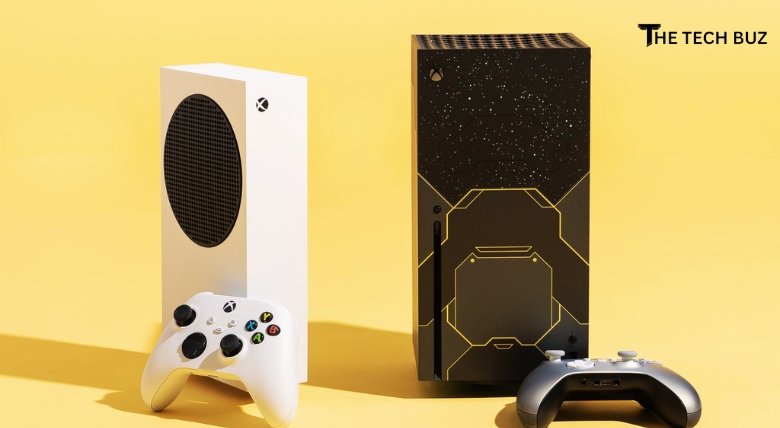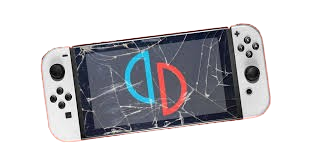Introduction
A console game is a type of video game consisting of images and often sounds generated by a video game console. Which are displayed on a television or similar audio-video system, and that can be manipulated by a player. This manipulation usually takes place using a handheld device connected to the console, called a controller. The controller generally contains several buttons and directional controls such as analogue joysticks, each of which has been assigned a purpose for interacting with and controlling the images on the screen.
History
Horizontal rectangle video game screenshot that is a representation of a game of table tennis.
A screenshot of a re-released version of Pong
Early console games
See also: Early history of video games
The first console games were for the Magnavox Odyssey, released in 1972, and consisted of simple games made of three white dots and a vertical line. These hardware limitations, such as the lack of any audio capability. This meant that developers didn’t have freedom in the type of games they could create. Some games came packaged with accessories such as cards and dice to enhance the experience and make up for the shortcomings of the hardware.

Video game industry crash
Main article: North American video game crash of 1983
By the end of 1983, consoles had become cheaper to develop and produce, causing a saturation of consoles which in turn led to their libraries becoming saturated too. Due to this saturation of the market, the prices of games were low and, despite good sales figures, developers weren’t making enough profit from sales to justify staying in the market.
Despite heavy marketing, the quality of the games could not back up their claims, causing many companies to go out of business.
Third and fourth generations
The release of new consoles from Nintendo, Sega, and Atari signified the start of the third (and fourth) generations, which also saw the introduction of notable franchises such as The Legend of Zelda, Star Fox, Sonic the Hedgehog, Final Fantasy, Metal Gear and Metroid.
From 2D to 3D
Main article: Fifth generation of video game consoles
The fifth generation of consoles saw the move from 2D to 3D graphics and the change in storage media from cartridges to optical discs. Analogue controllers became popular, allowing for a finer and smoother movement control scheme compared to the directional pad. The use of full-motion video became popular for cutscenes as optical discs allowed for the storage of high-quality video with pre-rendered graphics that a game couldn’t render in real time.
Internet capabilities
By the sixth generation, the console market had become larger than the PC market.
While earlier consoles did provide online capabilities,[33] it wasn’t until the sixth generation that online services became popular. Games introduced online features such as downloadable content, social features, and online multiplayer. Online multiplayer allowed players to play together from almost anywhere in the world, the social features of the platforms giving players the means to organize over these long distances.
Technology
Inputs
Main article: Game controller
Console games receive commands from the player through the use of an input device, commonly called a controller. They usually include a method to move the player character (joystick, d-pad, or analogue stick) and a variation of buttons to perform other in-game actions such as jumping or interacting with the game world.
Some games require additional accessories to act as alternative ways to control the game and to bypass the limitations of a standard game controller. Such items can include light guns, electronic instruments, or racing wheels.
Display
Consoles commonly use a television as their visual output device: optimal for viewing at a greater distance by a larger audience. As a result, many video games are designed for local multiplayer play, with all players viewing the same TV set, with the screen divided into several sections, and each player using a different controller.
Storage
Storage mediums play an important role in the development of a console game as it creates a fixed limit on the amount and quality of content that a game can have.[39] Unlike arcade games but similar to PC and handheld games, console games are generally distributed separately from their platforms and require a form of storage to hold their data.
Cartridge
Main article: ROM cartridge
Early cartridges had storage limitations which grew in size as the technology developed. They provided more security against third-party developers and the illegal copying of games. Some could be partially re-writable allowing for games to save their data to the cartridge itself meaning no extra saving media was required.
Disc
Main article: Compact disc
Discs became popular as the storage medium for console games during the fifth generation due to the ability to store large amounts of data and be produced cheaply.[43] The increase in space provided developers with a medium to store higher quality assets, the downside being that progress could not be saved directly to the disc as it could with a cartridge.
Console storage
Main article: Digital distribution in video games
It is common for games after generation six to be stored partially or fully on the console itself, most commonly on a hard drive. Similarly to how a PC game can be installed, the console game can copy key files to the console’s storage medium, which is used to decrease load times but still requires the original game storage medium to play
Cloud gaming
Main article: Cloud gaming
Cloud gaming services allow players to access games as a streaming service. Specialist hardware is not usually required to access these services and can be run from most modern PC operating systems, negating the need for a dedicated device for console gaming. The question of ownership is the biggest difference in comparison to other storage mediums for console games, as they could be considered only a method of renting the game.
Emulation
Main article: Video game console emulator
some console developers will provide this as a means to play games from their older systems on newer devices. For example, the Xbox 360 provides some access to Xbox games.

Games’ effect on console sales
While a PC is multi-functional and will be purchased to perform tasks other than gaming. A dedicated gaming console must-have games available for it to be successful. A good library of games will give a consumer reason to purchase the console and in turn. Create opportunities for more games to be created for it. Console developers will lower their profit margins on devices to encourage sales of the games. More profit can be obtained from software royalties than the sale of the consoles themselves.
Mascots
A strong mascot can come organically from a game and can play a large part in a console’s marketing strategy. A well-designed and popular mascot will naturally generate further games. A good example of a mascot who has come from an existing game is Nintendo’s Mario. He was created as a character for the Donkey Kong arcade game and wasn’t expected. Popular yet has gone on to become one of the most iconic gaming characters in history.
First and third-party development
Many console developers have a branch of the company that develops games for their console and are considered “first-party” developers. A concept that isn’t seen in PC development due to the variation of hardware configurations. Lack of complete ownership of a system by a single manufacturer. First-party developers have the advantage of having direct access to the console’s development. Which allows them to make the most of the hardware they are developing for.
Remakes and re-releases
Console games primarily started as ports of arcade games. The timing of early consoles coincided with the golden age of arcade games. Which gave developers a good opportunity to maximize their popularity. Despite console hardware not yet being strong enough to run the games as they were originally.
Additional content
The development of additional content before the internet was limited due to limited distribution methods. Some often than not content had to be released as a new game entirely as opposed to an add-on to an existing one. For example, Grand Theft Auto:
Vice City used the same mechanics and engine but was released as a separate game from Grand. Theft Auto III, whereas a PC title such as Total Annihilation offered downloadable content from 1997.
Ratings and censorship
The PEGI logo See also: Video game § Ratings and censorship
Criticism
It is particularly disturbing to some that some video games allow children to act out crimes. Concerns that children who play violent video games may tend to act. More aggressively on the playground has led to voluntary rating systems adopted by the industry. The ESRB rating system in the United States and the PEGI rating system in Europe.






